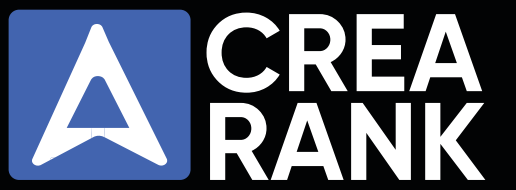Navigating the content marketing landscape involves familiarizing yourself with numerous terms. From adaptive content to user engagement, content marketing is filled with jargon. To assist you in deciphering this terminology, we’ve compiled a comprehensive content marketing glossary.
Explore additional glossaries to delve deeper into content marketing terminology:
Interested in expanding your content marketing glossary further? Join Revenue Weekly to gain access to expert advice and enrich your understanding of content marketing.
Continue reading to familiarize yourself with essential content marketing terms and broaden your knowledge as you craft your content marketing strategy.
A/B testing:
Referred to as a split test, this method divides visitors into two groups and presents each group with a different version of the page to determine which performs better. A/B testing is a valuable tool for enhancing content performance.
Above-the-fold:
The upper portion of a webpage is visible without scrolling. In content marketing, ensuring that your H1 tag, or header, is informative and attention-grabbing, enticing visitors to continue scrolling and engaging with your content is crucial.
Adaptive content:
Adaptive content refers to structuring webpage content to align with the intent and objectives of the visitor. This approach facilitates personalized interactions for users browsing the website.
Analytics:
Analytics furnish valuable insights to guide future marketing decisions. They provide a comprehensive understanding of user engagement with your content, enabling you to make necessary adjustments for improvement.
Audience:
Your audience comprises individuals interested in your business, representing the demographic you target with your content.
Backlinks:
Backlinks refer to links from other businesses that direct traffic to your website, enhancing both its visibility and credibility.
Blogging:
Blogging, a prevalent form of content marketing, entails sharing posts with your audience via third-party platforms or your website.
Bounce rate:
The bounce rate indicates the percentage of users who visit your page but do not explore further, indicating the relevance of your content to searchers.
Brand awareness:
This term denotes introducing and familiarizing people with your company’s brand, a crucial aspect facilitated by content marketing.
Buyer persona:
A buyer persona represents specific segments of your audience, aiding in effectively tailoring marketing efforts to meet their needs and preferences.
Call to action (CTA):
A CTA guides readers on the next steps to take after engaging with your content, encouraging specific actions to be undertaken.
Competitor keyword analysis:
Analyzing competitor keywords helps identify valuable keywords for your pages and generates new content ideas and targets.
Content curation:
Content curation involves organizing content recommendations to streamline information for your audience, simplifying their browsing experience.
Content management system (CMS):
A CMS assists in managing website digital content; examples include WordPress, Drupal, and Magento.
Content marketing:
Content marketing focuses on creating and disseminating valuable, relevant information to attract and engage a defined audience.
Content audit:
A content audit involves a thorough review of the content on your website to evaluate its effectiveness and identify areas for improvement.
Content marketing calendar:
A content marketing calendar facilitates planning, editing, and publishing content, ensuring consistency and timely delivery.
Content shock:
Content shock refers to an overwhelming content volume on a page, potentially driving users away and hindering user experience.
Content strategy:
Content strategy encompasses planning, developing, and managing written and media content on a website, including research, creation, and analysis.
Copywriting:
Copywriting involves crafting content for web pages, blogs, or social media platforms to engage users effectively.
Crowdsourcing:
Crowdsourcing entails gathering content from large groups of people, a technique commonly used for content generation.
Duplicate content:
Duplicate content refers to identical content appearing on different parts of your website, negatively impacting webpage performance.
Evergreen content:
Evergreen content remains relevant, consistently driving traffic to your website regardless of when it was published.
Gifographic:
A gif graphic combines information, GIFs, and graphics to present essential information on a topic, often in an animated format.
Google Search Console:
This tool provides insights into site traffic and performance for content pages, helping identify indexing errors and performance issues.
Infographic:
An infographic presents information visually, simplifying complex data or processes for easy comprehension.
Keyword mapping report:
A keyword mapping report offers detailed recommendations for optimal keywords to use on various pages of your website.
Key performance indicator (KPI):
KPIs are metrics used to evaluate the effectiveness of marketing campaigns, guiding decision-making processes based on performance.
Lead generation:
Lead generation involves tactics to attract potential customers to your website, with content marketing being a primary strategy for generating qualified leads.
Link building:
Link building involves acquiring backlinks from other websites to drive traffic and enhance trust and authority.
Long-form content:
Long-form content, typically exceeding 1200 words, includes lengthy blog posts, webinars, and whitepapers.
Long-tail keywords:
Long-tail keywords containing three or more words effectively drive relevant traffic to your content pages.
Marketing funnel:
The marketing funnel depicts individuals’ journey from discovering your business to becoming customers, with content marketing playing a crucial role in guiding prospects through this process.
Metrics:
Metrics are numerical data that measure content performance, including indicators like time on page and bounce rate.
On-page optimization:
On-page optimization involves enhancing individual web pages to improve search engine rankings and relevance over time.
Page rank:
A page rank indicates the position of your page in search engine results, with higher rankings driving increased traffic.
Search engine optimization (SEO):
SEO encompasses strategies to improve website visibility in search engine results, ensuring content ranks well and reaches a wider audience.
Short-form content:
Short-form content, comprising fewer than 1200 words, includes brief blog posts and product descriptions.
User engagement:
User engagement occurs when users interact with your content, emphasizing the importance of creating compelling and informative content.
Video marketing:
Video marketing involves creating informational videos on various topics, serving as an effective content delivery method.
If you find it daunting to grasp the multitude of content marketing terms and adjust your strategy accordingly, our team at CreaRank is here to assist. Leveraging our years of expertise, we specialize in crafting content marketing campaigns that deliver tangible results for our clients.

CreaRank® 2024 All Rights Reserved | Sitemap |